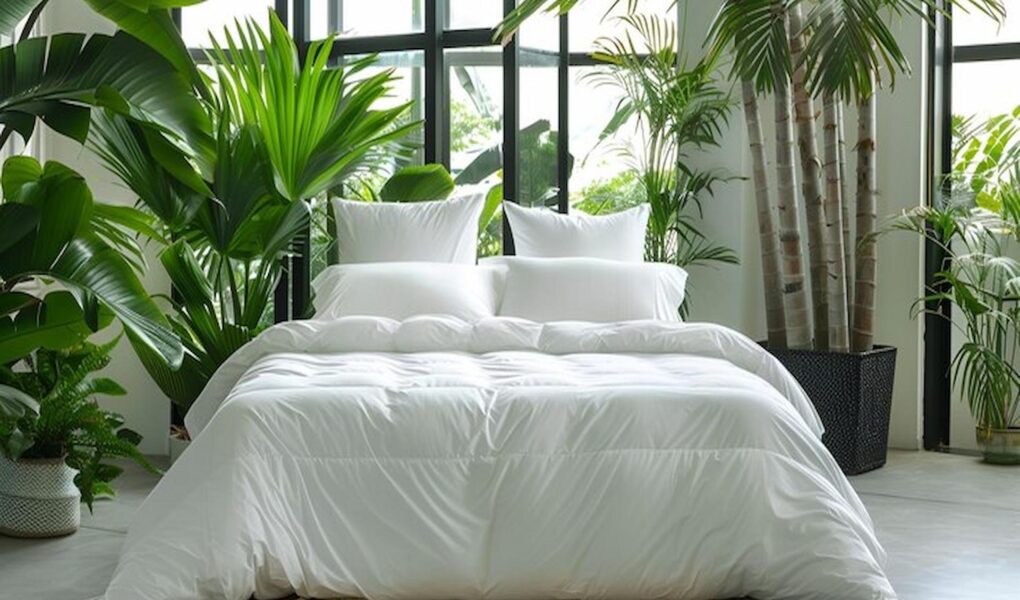Choosing high-quality cool cotton bedding can significantly enhance your sleeping experience by ensuring comfort, breathability, and durability. However, with a plethora of options available, determining the quality can be challenging. This article provides a comprehensive guide on identifying high-quality cool cotton bedding, focusing on key factors such as material, thread count, weave, finishing, certifications, and care instructions.
Understanding the Basics of Cool Cotton Bedding
Cool cotton bedding refers to sheets, pillowcases, and duvet covers made from cotton, which is prized for its breathability, moisture-wicking properties, and softness. High-quality cotton bedding can keep you cool and comfortable throughout the night, making it an excellent choice for hot sleepers or those living in warm climates.
Material Matters: Types of Cotton
The type of cotton used in your bedding is a crucial indicator of quality. Here are the most common types of cotton and what to look for:
Egyptian Cotton
Egyptian cotton is renowned for its superior quality. Grown in the Nile River Valley, it features extra-long fibers that produce softer and more durable fabric. Bedding made from 100% Egyptian cotton is often considered the gold standard for luxury and comfort.
Pima Cotton
Pima cotton, primarily grown in the United States, is another high-quality option. It has long fibers similar to Egyptian cotton, offering excellent softness and durability. Pima cotton bedding is often marketed under the trademarked name “Supima.”
Upland Cotton
Upland cotton is the most commonly used cotton in the world. While it is more affordable, it typically has shorter fibers, making it less durable and soft compared to Egyptian and Pima cotton. If you’re looking for the best cool cotton bedding, it’s advisable to opt for Egyptian or Pima cotton over Upland cotton.
Thread Count: Finding the Sweet Spot
Thread count refers to the number of threads woven into one square inch of fabric. While a higher thread count often suggests a denser and more durable fabric, it’s not the sole indicator of quality. Here’s how to interpret thread count when choosing cool cotton bedding:
Low Thread Count
Bedding with a thread count between 200 and 400 is typically lightweight and breathable, making it ideal for hot sleepers. However, ensure the cotton is of high quality to avoid compromising on softness and durability.
Medium Thread Count
A medium thread count range of 400 to 600 balances breathability and softness. It’s suitable for those who want a bit more heft and luxurious feel without sacrificing coolness.
High Thread Count
While high thread count bedding can feel luxurious, be cautious of extremely high numbers (above 800). Manufacturers sometimes use multi-ply threads to inflate the thread count, which can result in thicker, less breathable sheets. For cool cotton bedding, a thread count up to 600 is generally sufficient.
Weave: Percale vs. Sateen
The weave of your cotton bedding affects its texture, breathability, and durability. The two most common weaves are percale and sateen.
Percale Weave
Percale is a plain weave that creates a matte finish and crisp texture. It’s known for its breathability and cool, lightweight feel, making it perfect for warm climates or hot sleepers. High-quality percale bedding typically has a thread count of 200 to 400.
Sateen Weave
Sateen is a satin-like weave that produces a smooth, lustrous finish. It feels softer and heavier than percale, providing a more luxurious feel. While sateen bedding is generally less breathable than percale, it can still be a good option for those who prefer a silky texture. Look for sateen bedding with a thread count between 300 and 600 for the best balance of comfort and breathability.
Finishing: Look for Quality Finishes
The finishing process can significantly impact the feel and longevity of your bedding. Here are some common finishing techniques and what to look for:
Mercerization
Mercerization is a treatment applied to cotton fibers to increase their strength, luster, and dye affinity. Mercerized cotton bedding is more durable and has a smoother finish, often indicating higher quality.
Combing
Combing is a process that removes short fibers and impurities from cotton, leaving only the longest, strongest fibers. Combed cotton bedding is typically softer, stronger, and less prone to pilling, making it a reliable indicator of quality.
Singeing
Singeing involves passing the fabric over a flame to burn off loose fibers and produce a smooth surface. This process helps prevent pilling and gives the bedding a cleaner, more refined finish.
Certifications: Ensuring Ethical and Environmental Standards
Certifications can help you identify high-quality cool cotton bedding that meets ethical and environmental standards. Look for the following certifications:
OEKO-TEX Standard 100
OEKO-TEX Standard 100 certification ensures that the bedding is free from harmful chemicals and safe for human use. Bedding with this certification has been tested for over 100 substances that can be harmful to health.
GOTS (Global Organic Textile Standard)
GOTS certification indicates that the cotton used in the bedding is organic and produced according to strict environmental and social criteria. This includes the use of non-GMO seeds, sustainable farming practices, and fair labor conditions.
Fair Trade Certified
Fair Trade certification ensures that the bedding was produced under fair labor conditions, providing fair wages and safe working environments for workers. This certification also supports sustainable farming practices and community development.
Care Instructions: Maintenance for Longevity
Proper care is essential to maintain the quality and longevity of your cool cotton bedding. Here are some care tips to keep in mind:
Washing
Always follow the care instructions provided by the manufacturer. Generally, washing your cotton bedding in cold or warm water with a gentle detergent helps preserve the fabric’s softness and color. Avoid using bleach or fabric softeners, as they can weaken the fibers and reduce the bedding’s lifespan.
Drying
Tumble dry on a low setting or line dry to prevent excessive shrinkage and maintain the fabric’s integrity. Removing the bedding from the dryer while slightly damp and smoothing out wrinkles can help reduce the need for ironing.
Ironing
If you prefer a crisp look, iron your cotton bedding on a medium setting while it’s still slightly damp. Avoid high heat, as it can damage the fibers and diminish the bedding’s cool, breathable qualities.
Visual and Tactile Assessment
Lastly, don’t underestimate the importance of visually and physically assessing the bedding before purchasing. High-quality cool cotton bedding should have a smooth, even weave with no visible flaws or inconsistencies. It should feel soft and comfortable to the touch, with a substantial weight that indicates durability.
Conclusion
Selecting high-quality cool cotton bedding involves evaluating various factors such as the type of cotton, thread count, weave, finishing processes, certifications, and care instructions. By understanding these elements and knowing what to look for, you can ensure that your bedding is not only comfortable and breathable but also durable and ethically produced.
When comparing different options, prioritize products made from Egyptian or Pima cotton with a thread count between 200 and 600, depending on your preference for breathability and softness. Choose a weave that suits your comfort needs, whether it’s the crisp feel of percale or the silky texture of sateen. Look for bedding that has been mercerized, combed, or singed for added quality, and ensure it meets certifications like OEKO-TEX Standard 100, GOTS, or Fair Trade for safety and sustainability.
By following these guidelines, you can confidently select high-quality cool cotton bedding that enhances your sleeping experience, providing comfort, coolness, and peace of mind.




